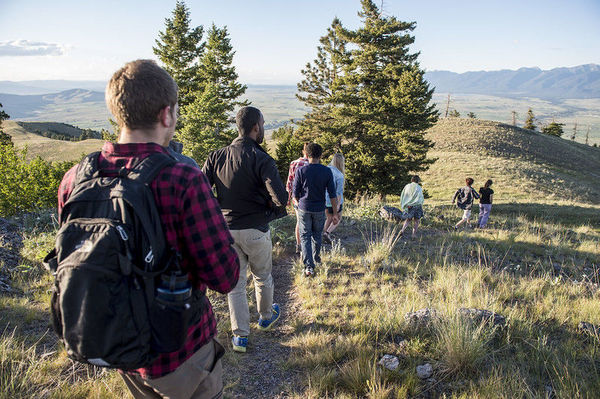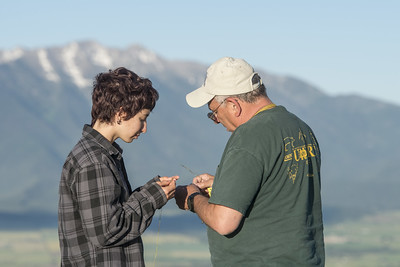A 42-year study of bunchgrasses in Montana’s National Bison Range by researchers at the University of Notre Dame showed that several vegetation changes occurred seasonally, suggesting that studying climate change on a large-scale, annual basis may not be enough to fully understand and document its effects.

The study, published in PLOS One, documented several types of changes over the course of each year since 1978 when Gary Belovsky, professor emeritus in the Department of Biological Sciences and former Gillen Director of the University of Notre Dame Environmental Research Center (UNDERC), along with Jennifer Slade Belovsky, senior research technician in the department, began conducting research in the area. The study is one of the longest single-location studies of plant dynamics in a grassland in the United States.
The common method for forecasting changes in vegetation aligned with climate change has been to evaluate the average temperature and average precipitation on an annual basis. Using this method, researchers observing an increase in temperature and decrease in precipitation would have concluded that this pattern leads to decreased plant production.

“But what we found is that spring has become cooler and wetter, which has led to increased production, even though annual temperature increased and precipitation declined,” he said. “So the forecasting that ecologists are making for climate change needs to be focused much more on seasonal aspects of the change, and local, and not as broad of a region as they are trying to do.”
According to the study, plants increased by 110 percent, but did not remain green over the summer. This increased their susceptibility to fire and decreased the food supply for herbivores that rely on green plants to eat.
Grasses also became more abundant – by 54 percent – at the expense of green flowering plants called forbs, which resulted from the wetter and cooler spring seasons, according to the study. And because the summer became hotter and the plants turned brown, they were unable to start regrowing in the fall, when conditions again became wetter and cooler.
Belovsky simultaneously looked at how the change of vegetation affected herbivores, so plans to publish the next paper on the change in population dynamics of herbivores – from grasshoppers to bison – in the same region since 1978.
“This study points out to us how dynamic nature is; how it is changing so much,” he said. “We do know there are natural changes to climate that are cyclic, but by having 40-some years of data, this trend is a pattern that has not been described…if this were a natural cycle it would have to be 80 years or longer, so this is more likely due to human-caused climate change.”